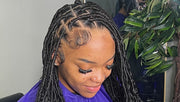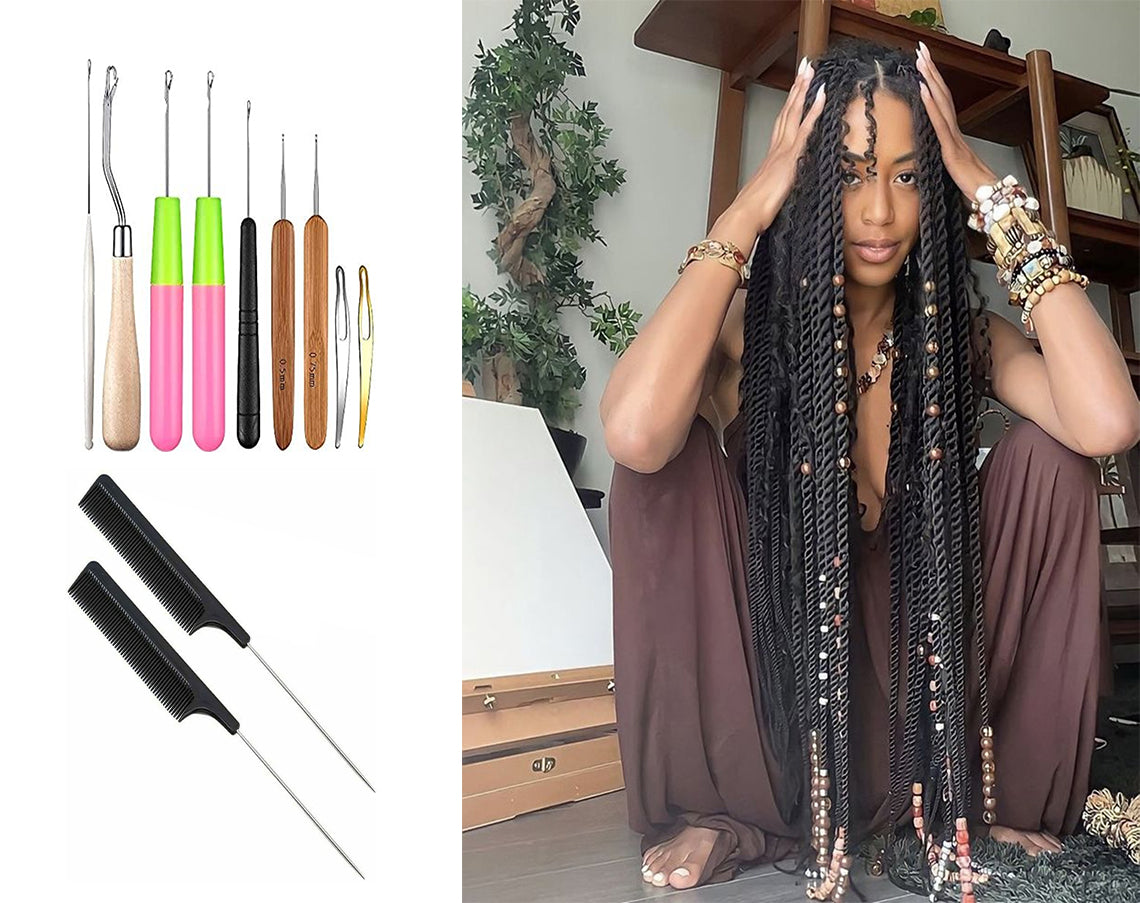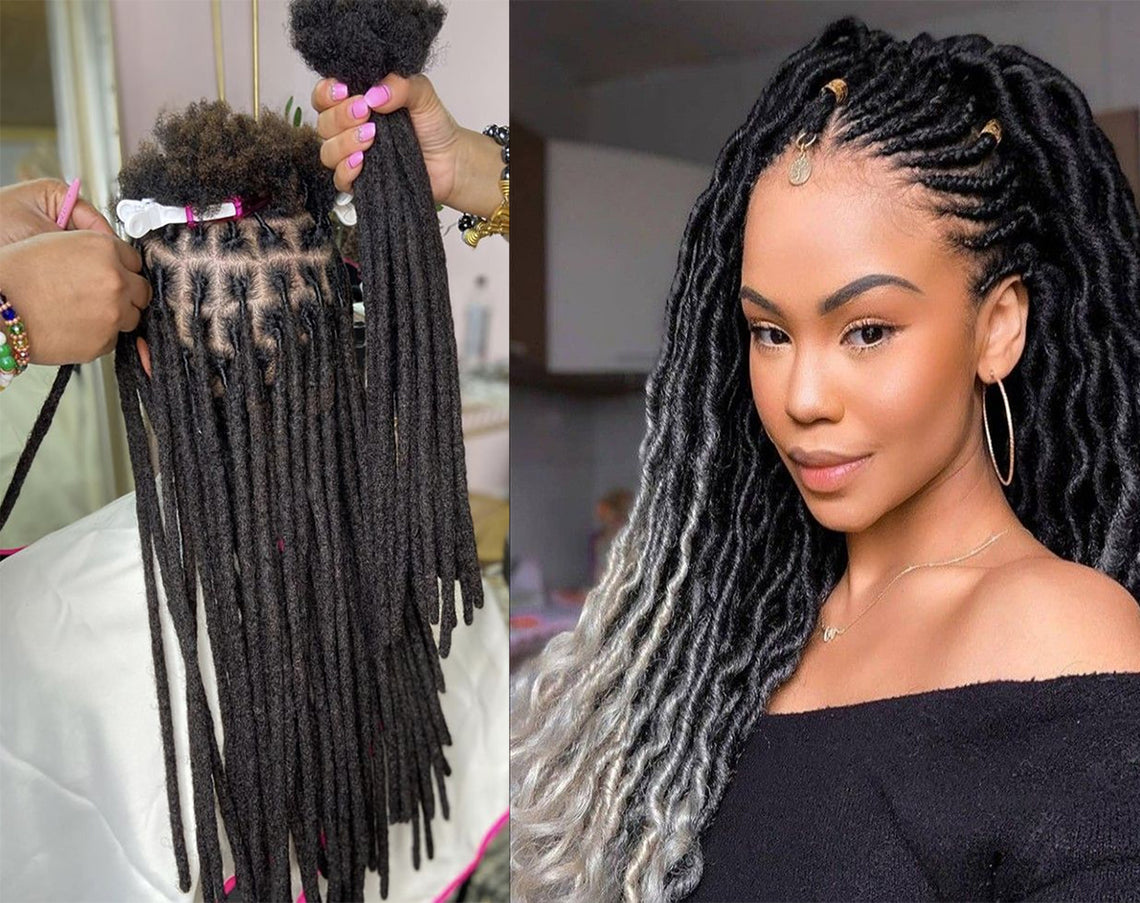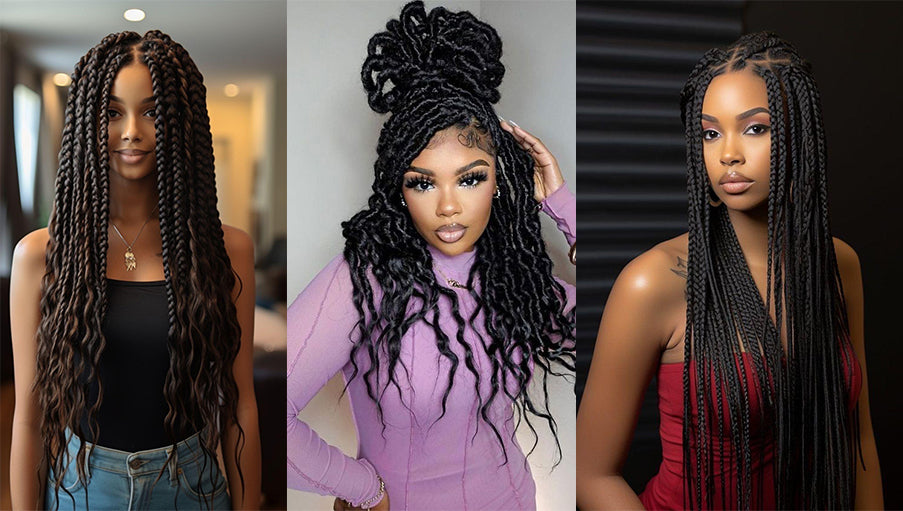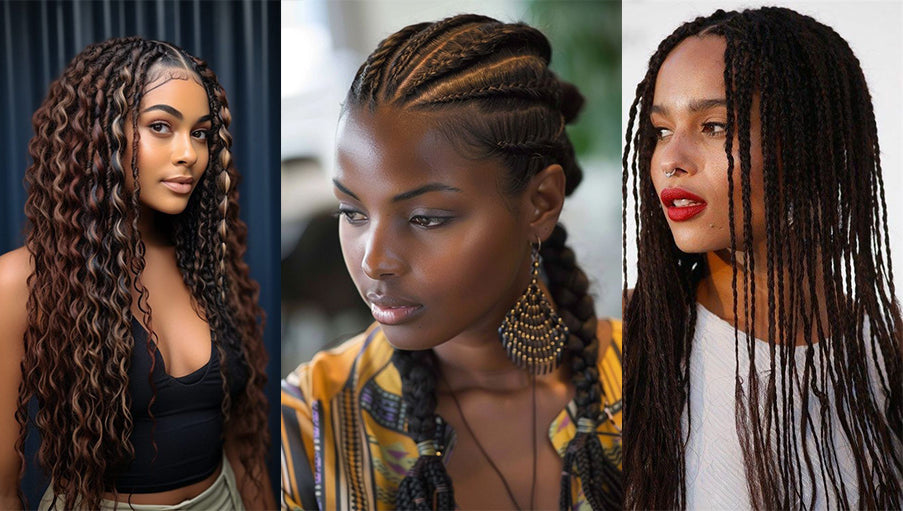How to Get Rid of Buildup in Dreadlocks?
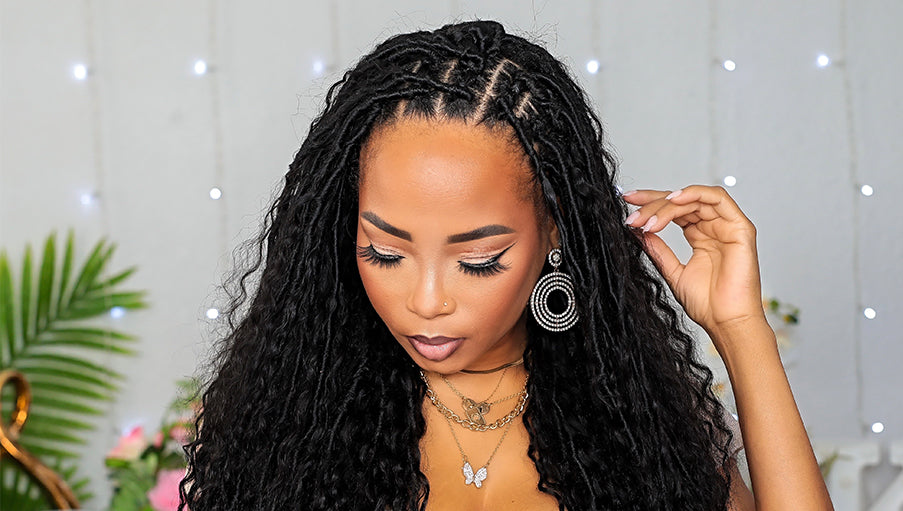
Keeping your dreadlocks at their best isn't just about how they appear; it's also about giving them the right care and attention. That means getting rid of unwanted buildup. When dirt and leftover hair products build up in your dreadlocks, they can start to smell bad and even cause hygiene problems.
Don't worry though, I've got you covered. This comprehensive guide will walk you through the various types of buildup and how to spot them. More importantly, I will show you the best methods for removing buildup and keeping it from coming back.
What Is Buildup?

Buildup is the accumulation of residue, dirt, oils, and hair products that get stuck in the hair over time. If you fail to wash your dreadlocks correctly or apply excessive product dirt and other impurities can quickly accumulate. And when this happens you'll notice a heavy, lackluster feel on your locs and sometimes, unpleasant odors.
Buildup can also compromise the health of your hair and scalp. One way it does this is by clogging hair follicles. It also supports the growth of bacteria and fungi which cause itching and discomfort. To keep your dreadlocks clean and healthy, you must remove buildup regularly.
What are the Types of Buildup?

These are the 4 common types of buildup in dreadlocks:
1. Product buildup
When you use hair care products like shampoos and waxes, they often leave behind traces of residue on your hair and scalp. With repeated use, this residue can accumulate and make your hair feel sticky and greasy. It steals the shine from your dreadlocks and makes it harder to style. Product buildup can also trap dirt and other particles, which can make your hair even dirtier and more difficult to clean.
2. Natural buildup
Natural buildup on the scalp comes from oils and sweat from your glands. The scalp produces oils to moisturize the hair and skin, but too much of these oils can cause buildup. When this happens, your hair may feel greasy and look flat. Additionally, it can mix with dirt in the environment and hair products, making the problem worse.
3. Environmental buildup
Dirt and pollutants from the surroundings can also accumulate on your hair. These particles are called environmental buildup. In some cases, hard water with high mineral content can also leave deposits on your locs. This type of buildup can make the hair feel gritty and dry.
4. Lint
Tiny fibers from everyday items like towels and clothes can get stuck in your hair, causing it to look messy and dull. This is especially true for dreadlocks because their textured surface holds on these fibers well. It can be hard to get rid of lint buildup because the fibers are all tangled together.
How Do I Know I Have Buildup?

Here are some signs that indicate that you may have a buildup:
1. Dull appearance
When dreadlocks appear dull and lack their natural shine, it can be a sign of buildup. Residue and impurities cover up the hair shaft preventing light from bouncing off it like it normally would. The result is a diminishing natural radiance that leaves dreadlocks looking dull.
2. Unpleasant odor
If your dreadlocks start giving off a funky smell that just won't quit, it could be a sign of buildup. Trapped residue and impurities foster bacterial growth, which produces byproducts that emit odors. When you notice an unpleasant smell, start preparing for a thorough cleansing.
3. Thinning of locs
If you notice your dreadlocks starting to thin out, especially at the roots, it might be because of buildup. The weight of accumulated residue can strain the hair and stress the roots. Consequently, the dreadlocks become weak and thin. Buildup can clog the hair follicles, preventing healthy hair growth. This blockage causes thinning, especially at the roots.
4. Itchiness and discomfort
When gunk builds up, it can clog the pores on the scalp, preventing the natural release of oils and sweat. This blockage can lead to irritation and discomfort. Some people may be sensitive or allergic to certain hair products that contribute to the buildup. This sensitivity can manifest as scalp itchiness.
5. Heavy or greasy feel
Hair products, combined with the natural oils from your scalp can accumulate into a greasy sticky mass over time. This state also hinders air circulation within your locs so the greasy sensation lingers.
6. Residue on fingertips
If you run your fingers through your dreadlocks and feel them getting sticky or gritty, that's a dead giveaway of buildup. This residue usually comes from the buildup of hair products and natural oils.
How to Remove Buildup

Here are 4 simple methods to remove buildup from your dreadlocks:
1. Clarifying shampoo
Clarifying shampoo is an effective solution for cleansing dreadlocks. It typically contains stronger surfactants or cleansing agents compared to regular shampoos. First, get your hair soaking wet with warm water to open the tiny pores on the hair shafts. Then, put a good amount of the clarifying shampoo on your locs, especially on your scalp and the spots with the most gunk.
Use your fingertips to gently rub the shampoo into your scalp and hair until it gets foamy. Then, let the shampoo sit for a few minutes so it can break down the buildup. Finally, rinse your hair well with warm water to get rid of the shampoo and the gunk it has loosened. You may need to repeat this process if your hair has a lot of residue. After using the clarifying shampoo, it's essential to follow up with a conditioner to re-moisturize your hair, as clarifying shampoos can be drying.
2. Apple cider vinegar
Apple cider vinegar has a slightly acidic pH, which helps to balance the pH of the hair. This acidity can help to remove residue and excess oils from dreadlocks without stripping away natural oils completely. Moreover, they have strong antibacterial and antifungal properties which help to eliminate odor-causing bacteria and fungi in dreadlocks.
To clean dreadlocks with apple cider vinegar, mix 1 part vinegar with 2 parts water in a spray bottle. Spritz the mixture onto the dreadlocks until they're saturated. Then, massage the solution into the dreadlocks and let it sit for 10-15 minutes. Afterward, rinse the dreadlocks well with water to remove the vinegar and buildup. Finalize the process with thorough drying. Use a clean towel or a hairdryer on low heat to dry your dreadlocks.
3. Baking soda
Baking soda's alkalinity helps lift dirt, oils, and residues from hair. It gently cleanses without removing too many natural oils. Baking soda is also known for neutralizing odors. When used on dreadlocks, it can get rid of unpleasant smells caused by sweat or product buildup.
You can create a mixture by combining 1 tablespoon of baking soda with 1 cup of warm water. Stir the mixture until the baking soda is completely dissolved. Then, wet your dreadlocks and apply the baking soda solution. Gently massage the solution into the dreadlocks and allow it to sit for about 10 minutes before rinsing with water.
4. Dreadlock detox
Dreadlock detox is a deep-cleaning method where you use a mixture of different products to remove impurities that have accumulated over time. I highly recommend this process for people with a significant amount of buildup. However, dreadlock detox may not be suitable for those with sensitive scalps. People with color-treated or chemically processed hair should be cautious too, as some detox products may strip away hair color or affect chemical treatments.
Start your dreadlock detox by looking for products that are made specifically for dreadlocks. Review the product's instructions and do as it says. Follow the same application process as the other methods above.
How to Prevent Buildup

Prevention is better than cure. Following the steps below with help you avoid buildups and keep your locs fresh always:
1. Establish a proper cleansing routine
Regularly wash your dreadlocks to prevent buildup. How often you wash them depends on your hair type and how active you are, but washing them every 1-2 weeks is usually best. When you wash your dreadlocks, focus on massaging your scalp and gently squeezing the dreads from top to bottom.
2. Find the right products
Look for shampoos that are made specifically for dreadlocks. Make sure they don't contain conditioners or thick moisturizers, as these can cause buildup. Instead, moisturize your scalp and hair with natural oils such as tea tree oil or jojoba oil, which won't leave any residue.
3. Proper drying technique
Dry your dreadlocks thoroughly after washing. Use clean towels or fabrics to wrap them, but don't keep them wrapped for long, as the moisture can attract grime and cause buildup. Also, avoid towels that have been treated with softeners or detergents, as the residues can stick to your dreadlocks.
4. Maintain a healthy scalp
A healthy scalp is essential for preventing buildup. Regularly massage your scalp to improve blood flow and support hair growth. Avoid using thick products like gels, waxes, or creams on your scalp and dreadlocks. These products can clog your hair and attract dirt and lint.
Related Reading: How to Take Care of Dreadlocks?
Final Thoughts
Following the simple steps in this guide will help you eliminate the buildup in your locs. Take preventive measures seriously. Keep a regular cleansing routine and use only the best products. Keep up with our online community for more tips and tricks on dreadlock care.


